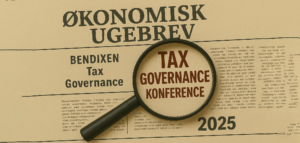(26 February 2019 – By Donato Calace, Datamaran) The EU Non-Financial Reporting Directive (NFRD) is about to change. Surprised? You should not be. The EU Action Plan last year and the Technical Expert Group on Sustainable Finance report this January were already discussing the update of the Non-Binding Guidelines (NBG) of the Directive.
This February the EU Commission released the Consultation Document on the Update of the Non-Binding Guidelines on Non-Financial Reporting.
The Consultation Document is worth the attention as it provides a clear picture of where the next generation of disclosure requirements is heading, so companies can be ahead of the game.
The EU Non-Financial Reporting Directive vs The Task Force on Climate-related Financial Disclosure
The document mentions the Task Force on Climate-related Financial Disclosure (TCFD) 53 times over 33 pages – more than one mention per page. Is the EU suffering from the TCFD obsession? Not exactly – I would rather say that the new Non-Binding Guidelines are setting the stage for the NFRD to “take over” the TCFD.
As I explained in my previous opinion piece on the report by the EU High Level Expert Group on Sustainable Finance, it is no mystery that there is a race to be the “best policy maker” around climate action – and the EU intends to win that race. The EU explicitly declared this goal at the beginning of their Action Plan. This is also why in the Consultation Document you can find a number of remarks to limitations of the TCFD, such as:
“The TCFD states that its recommended disclosures related to Strategy and to Metrics and
Targets should be subject to a financial materiality assessment. The TCFD does not, however, state that a materiality assessment should apply to its recommended disclosures on Governance and Risk Management, implicitly proposing that its disclosures on Governance and Risk Management should be made irrespective of materiality. Therefore, a company wanting to implement the TCFD recommendations may need to disclose certain information even if that information is not required according to the NFRD.”
It is interesting to see that such policy making competition is also felt on the other side of the Atlantic. In the recent petition to the US Securities and Exchange Commission (SEC) for a rulemaking on ESG disclosure, backed and signed by investors and associated organizations, representing more than $5 trillion in assets under management, the authors state:
“US corporate reporting standards will soon become outdated if they are not revised to incorporate global developments regarding the materiality and disclosure of ESG information.”
Alignment to the TCFD
From a more technical perspective, the Consultation Document describes in detail how the Non-Binding Guidelines will align the Non-Financial Reporting Directive requirements to the TCFD recommendations. In particular, the Consultation Document provides a useful mapping that clearly visualizes how the two framework align.
The Consultation Document also borrows from the TCFD the definition of climate-related risks (physical and transition) and opportunities. For the latter specifically, the Consultation Document explains:
“The taxonomy of sustainable economic activities, proposed by the Commission as part of the Action Plan on Financing Sustainable Growth, will help to identify and classify such Opportunities”.
In other terms, the EU Commission is implicitly making the point that it is creating the policy tools to enable the climate-related opportunities (e.g. the green supporting factor).
On one point the Consultation Document is instead less ambitious than the TCFD:
“The TCFD proposes that its recommended disclosures are published in the company’s “annual financial filings”. The NFRD allows Member States to permit companies to publish their non-financial statement in a separate report under certain conditions, and a majority of Member States have taken up this option”.
As noted by Eccles and Krusz in their latest review of TCFD disclosures in the SEC filings of the 15 largest Oil and Gas companies:
“Companies provided more information relevant to the TCFD Recommendations in their voluntary sustainability reports than in the SEC Forms 10-K or 20-F. This raises the critical question of just how difficult it will be to get companies to start putting this information they are already disclosing into their financial filings as recommended by the TCFD.”
They conclude that “regulatory support will be ultimately necessary” to make the transition happen, and in this sense the Non-Binding Guidelines of the Directive are not providing that kind of support. Other authoritative voices in the field are also raising this point, including ACCA’scommentary to this January’s EU Technical Expert Group on Sustainable Finance Report.
Definition of materiality
Interestingly, the Consultation Document introduces a new definition of materiality – called “double materiality”. The first perspective concerns the potential or actual impacts of climate-related risk and opportunities on the “performance, development and position” of the company (indicated as “financial materiality”, with an investor type of audience). The latter refers to the “external impacts of the company’s activities” (labeled as “environmental & social materiality”, whose audience consists of consumers, civil society, employees, and investors too).
Besides the label, the definition does not introduce new elements to the concept of materiality, reflecting two perspectives that were already described in other frameworks or guidance documents. Rather, it is there to ensure alignment with the TCFD, which is based on the “financial materiality” definition.
In my opinion, it is more interesting, instead, to look at the implications of the double materiality in terms of new disclosure requirements concerning the materiality determination process.
New disclosures on the materiality determination process
The Consultation Document clarifies the following:
“Companies should consider using the proposed disclosures in these guidelines if they decide that climate is a material issue from either of these two perspectives”.
This implies that companies can make a decision concerning the materiality perspective (financial or environmental & social, or both) they are adopting when disclosing the information. This evidently calls for enhanced transparency from the board on what materiality perspective is adopted and why. Best practice in this sense would be Statement of Significant Audiences that Eccles and Youmans already proposed in 2015.
Additionally, according to this Consultation Document, the NBG will require additional detail around the materiality determination process in relation to:
- A comply or explain mechanism on the materiality methodology: “Companies that conclude that climate is not a material issue are advised to consider making a statement to that effect, explaining how that conclusion has been reached.”
- Setting the boundaries of the materiality assessment so that “natural, human, and social capital dependencies” of climate-related issues are reflected.
- Specific materiality methodology disclosure requirement. “Describe the company’s processes for identifying and assessing climate-related risks over the short, medium, and long term and disclose how the company defines short, medium, and long term”.
Importantly, the NFRD disclosure requirement is mapped to the TCFD Recommendation Risk Management a), which states that the best way to answer the disclosure requirement is through disclosing the materiality assessment methodology.
- Specific disclosure requirements concerning the ongoing monitoring of material risk. “Describe the frequency of reviews and analyses with regards to risk identification and assessment.”
As explained in the Consultation Document (and also evident from their name), the Non-Binding Guidelines of the Directive are non-mandatory supplement to the requirements of the The EU Non-Financial Reporting Directive. Although voluntary in their nature, they provide a clear indication on where the policy making activity is heading: towards enhanced transparency and an increasing importance of materiality analysis.
https://www.datamaran.com/non-financial-reporting-directive-what-is-changing/




